How it’s Used Biomass Energy System
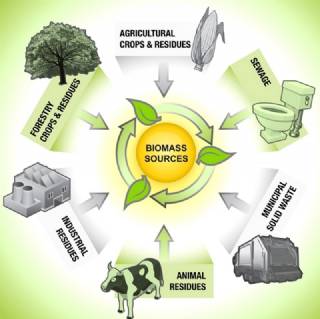
Biomass facilities burn carbon-based organisms to generate steam in order to power turbines for electricity production. All types of biomass release emissions when burned.
Current taxation process
There are 13 energy production facilities in Minnesota primarily powered by biomass. These facilities have a combined capacity of approximately 260 megawatts. They include:
- Four investor-owned utilities
- One owned by a cooperative
- Seven privately owned
- One owned by a municipal government
Biomass facilities are valued and taxed like coal, nuclear, and natural gas energy producing facilities. Biomass facilities owned by investor-owned utilities and cooperatives are valued on a unitary basis as described beginning on page 11.
- Some of these plants qualify for exemptions that reduce their taxable value.
- Privately-owned biomass facilities attached to industrial facilities are taxed based on the value of the facility itself.
- Municipally-owned biomass facilities are exempt from property taxation.
Exclusions and exemptions
Pollution control exemption
This exemption applies to property used primarily to reduce or control air, water, or land pollution. The exemption reduces the taxable value of companies in certain industries.
- A company must file an application with Revenue to receive this exemption.
- The application is reviewed by the Minnesota Pollution Control Agency and is approved or denied by Revenue.
- If an application is approved, the property would qualify for the exemption in the following assessment year.
- After the application is approved, the pollution control exemption must be claimed each year by February 15. The exemption typically applies to equipment. Currently, four biomass facilities receive this exemption. Three of these facilities are owned by investor-owned utilities and one facility is owned by a cooperative.
Statutory exemptions
Statutes grant special tax exemptions to three small biomass facilities. However, none of these facilities are assessed by the state so they are not included in this report. Municipally-owned biomass facilities are exempt from property taxes.
Impact
The pollution control exemptions reduce the taxable value of the biomass facilities, and the taxes they pay by about 18 percent.
Variation in taxes
The tax per kilowatt hour produced can vary by facility. Variations happen because:
- Some facilities are more efficient
- Some run more continuously than others
- Some qualify for different levels of exemptions
- Some are municipal utilities that are not subject to property taxes
- Local tax rates vary
Costs and benefits
The costs and benefits of hosting a biomass facility are similar to those for other traditional and renewable energy sources. Benefits include job creation and a skilled workforce, a stronger tax base, and lower taxes.
Like other renewable energy sources, the costs of hosting a biomass facility are much less than fossil fuels. One cost to host communities is pollution, as biomass facilities emit some greenhouse gases and particulate matter.
Since we cannot quantify the costs that biomass facilities place on host communities, it is not conclusive whether the property tax system adequately compensates for the potential costs of hosting biomass facilities.
Labels
How it’s Used Biomass Energy Systembiomass boilerbiomass energypellet boilerwood chip boilerbiomass heating systembiomass boiler costbiomass heaterbiomass boiler systembiomass generatordomestic biomass boileris biomass a renewable energy sourcebiomass as a renewable energy sourcerenewable energyalternative energy researchFarming Principle: Deep Soil Preparation
Looking at GB as a three-legged stool, deep soil preparation is one of the legs. Deep soil preparation builds soil and soil structure by loosening the soil to a depth of 24 inches (60 cm). Ideal soil structure has both pore space for air and water to move freely and soil particles that hold together nicely.

Smart Home Ecosystem - Smart Home Automation - Smart Home Security - Smart Home Technology
The outer-most level corresponds to the individual devices and sensors that consumers interact with. Several candidates are vying for the role of a leader introducing smart home services to the mass market.

Solar Energy Systems - Solar Modules - Solar Electric System Design - Solar Power
The heart of a photovoltaic system is the solar module. Many photovoltaic cells are wired together by the manufacturer to produce a solar module. When installed at a site, solar modules are wired together in series to form strings. Strings of modules are connected in parallel to form an array.
Solar Energy Systems - Array Mounting Racks - Solar Ray - Solar Panel - PV Racks and Mounts
Arrays are most commonly mounted on roofs or on steel poles set in concrete. In certain applications, they may be mounted at ground level or on building walls. Solar modules can also be mounted to serve as part or all of a shade structure such as a patio cover. On roof-mounted systems, the PV array is typically mounted on fixed racks, parallel to t

Solar Energy Systems - Grounding Equipment
Grounding equipment provides a well-defined, low-resistance path from your system to the ground to protect your system from current surges from lightning strikes or equipment malfunctions. Grounding also stabilizes voltages and provides a common reference point. The grounding harness is usually located on the roof.
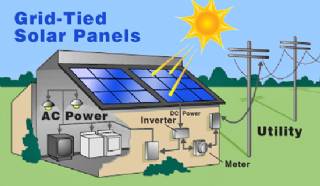
Solar Energy Systems - Solar Inverter - Solar Panel Inverter
Most grid-connected inverters can be installed outdoors, while most off-grid inverters are not weatherproof. There are essentially two types of grid-interactive inverters: those designed for use with batteries and those designed for a system without batteries.
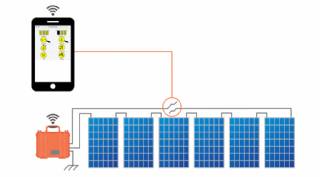
Solar Energy Systems - Solar Disconnects
Automatic and manual safety disconnects protect the wiring and components from power surges and other equipment malfunctions. They also ensure the system can be safely shut down and system components can be removed for maintenance and repair.
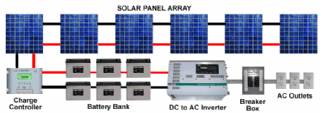
Solar Energy Systems - Solar Battery Bank
Batteries store direct current electrical energy for later use. This energy storage comes at a cost, however, since batteries reduce the efficiency and output of the PV system, typically by about 10 percent for lead-acid batteries. Batteries also increase the complexity and cost of the system.

Solar Energy Systems - Solar Charge Controller
A charge controller, sometimes referred to as a photovoltaic controller or battery charger, is only necessary in systems with battery back-up. The primary function of a charge controller is to prevent overcharging of the batteries. Most also include a lowvoltage disconnect that prevents over-discharging batteries. In addition, charge controllers pr
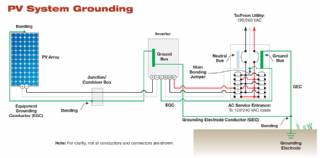
Solar Energy Systems - The NEC and PV Systems
Solar PV systems must be installed in accordance with Article 690 of the National Electric Code, which specifically deals with PV systems, as well as several other articles of the NEC that pertain to electrical systems in general. When there is a conflict between NEC 690 and any other article, NEC 690 takes precedence due to the unique nature of PV